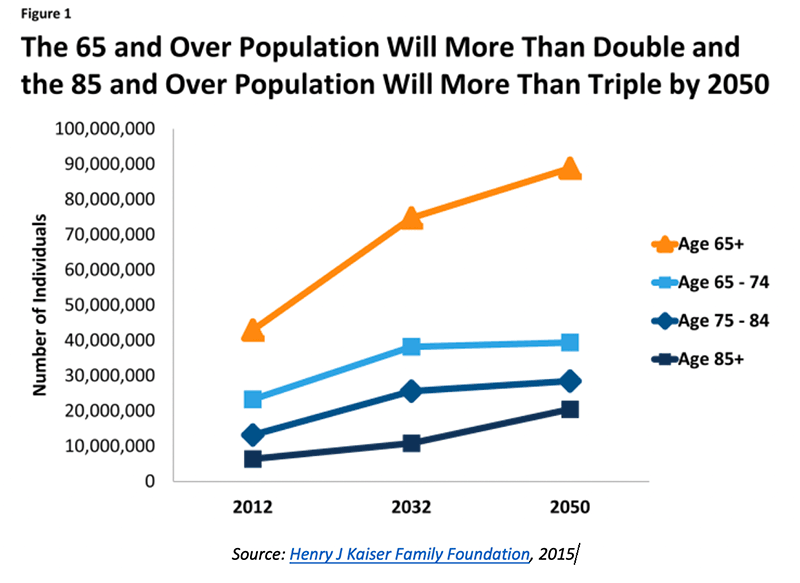Telemedicine’s Role in Long-Term Care

Telemedicine applications have come a long way over the past decades in terms of their capabilities, affordability and accessibility. These applications are making it easier than ever before to deliver better care to many different populations, while also decreasing the cost of this care. Their efficacy is most evident in long-term care settings.
The statistics on long-term care in this nation are irrefutable. Over 8.3 million people live in long-term care settings and this figure is expected to increase exponentially by 2050. The number of Americans over 65 will nearly double by then, and those over 85 is expected to triple.[i]
[i] Rothwell, C.J., Madans, J.H., Lau, D.T., & Strashny, A. (2019). Long-term care providers and services users in the United States, 2015-2016. National Center for Health Statistics, 3(43).

The strain of this growth will put massive pressure on an already overstretched healthcare system. Currently, hospital readmission of skilled nursing facility patients costs Medicare more than $4 billion annually,[i] and given the projected population trends, this cost will skyrocket over the next several decades. The use of telemedicine in long-term care settings offers an alternative that can help with cost
containment while ensuring that this vulnerable population can access effective treatment more easily than they may be able to otherwise.
There are many real benefits to applying telemedicine in the long-term care setting, including the following, among others:[i]
- Patients receive treatment in-place, avoiding transport and exposure to additional illness that frequently occurs during hospitalization as well as minimize the labor necessary for difficult-to-transport patients.
- There is a better coordination of care as the facilities are involved in nearly all medical treatment, leaving them in a better position to understand the comprehensive care strategy.
- A reduction in the likelihood of developing hospital-itis, or the deconditioning that may be experienced due to prolonged bed rest and the potential for injuries associated with it, such as pressure ulcers.
- Facilities will retain more revenue due to fewer hospitalizations.
- They offer better adherence to the Centers for Medicare & Medicaid Services’ 2016 announcement of new penalties for potentially preventable readmissions.
- Expanding access to specialty care, which is more accessible remotely.
- Both chronic conditions and emergencies can be treated immediately with a remote physician to direct the local care that is necessary.
- Physicians are able to use their time more efficiently and are able to treat more patients.
While telehealth in Long-Term Care cannot replace all in-person clinical interactions, it is a crucial component of enhancing the quality of care, particularly in long-term care facilities. While the initial investment in these technologies may seem very steep, the ROI on telemedicine has been proven. It is an incredibly cost-efficient solution and a critical part of minimizing the costs of health care. Moreover, the data that can be collected through remote monitoring technologies offers a more comprehensive view of the patient’s history and ensures that optimal treatment plans are developed.
But technology is only one component in this equation, and clinicians working in long-term care facilities must understand how and when telemedicine should be used. While these challenges may seem formidable, once the technology is in place and the staff have been trained, the benefits of telemedicine in this setting will begin to show quickly – for both the patients and the providers.
[1] Rothwell, C.J., Madans, J.H., Lau, D.T., & Strashny, A. (2019). Long-term care providers and services users in the United States, 2015-2016. National Center for Health Statistics, 3(43).
[1] Spanko, A. (2018, November 27). CMS trumpets telehealth potential in skilled nursing and long-term care. Skilled Nursing News.
[1] Edmondson, T. (2017). Long-term care: Telehealth-an untapped opportunity for nursing facilities. Today’s Geriatric Medicine, 10(3), 28.
Written by Rikki Roehrich
Related posts
Leave a Comment Cancel reply
You must be logged in to post a comment.
Our Customers


